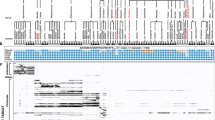Abstract
The successful diagnosis of a microbial infection is dependent on the ability to confirm the presence of material from pathogenic microorganisms in clinical samples. The diagnostic approaches will vary according to the clinical situation but any test must be able to identify a potential pathogen, or material from that pathogen, amongst complex biological material. In order to identify a particular microorganism it is necessary to take advantage of special characteristics which are unique or commonly associated with that micro-organism. In addition, to be clinically and commercially successful, tests should in general be reliable, economic and easy to perform by trained personnel. A variety of approaches have been used routinely to identify infectious agents in the clinical diagnostics laboratory. Simple bacteriological techniques including cultivation of samples on selective or differential growth media and biotyping have been in successful use for decades. These approaches take advantage of particular metabolic traits associated with individual pathogens. Since specificity is one of the main requirements of a diagnostic reagent, immunological techniques have proved to be of immense value. Indeed, most of the recently developed diagnostic kits employ antibodies which bind specifically to particular bacterial or viral associated antigens. Since all micro-organisms possess unique as well as cross-reactive antigens, an immunological approach can be used at some stage in their identification.
Access this chapter
Tax calculation will be finalised at checkout
Purchases are for personal use only
Preview
Unable to display preview. Download preview PDF.
Similar content being viewed by others
References
Southern, E. M. (1975). Detection of specific sequences among DNA fragments separated by electrophoresis. J.Mol. Biol, 98, 503 – 17
Winther, M. D. (1985). In Shinton, N. K. (ed.)New Technologies in Clinical Laboratory Science, pp. 35–44. ( Lancaster: MTP Press )
Moseley, S. L., Huq, I., Alim, A. R. M. A., So, M., Samadpour-Motalebi, M. and Falkow, S. (1980). Detection of enterotoxigenicEscherichia coliby DNA colony hybridisation.J. Infect. Dis., 142, 892 – 8
Leary, J., Brigati, D. J. and Ward, D. C. (1983). Rapid and sensitive colorimetric method for visualising biotin-labeled DNA probes hybridised to DNA or RNA immobilized on nitrocellulose. Bio-blots.Proc. Natl. Acad. Sci. USA, 80, 4045 - 9
Brigati, D.J., Myerson, D., Leary, J. J., Spalholz, B., Travis, S. Z., Fong, C. K. Y., Hsiung, G. D. and Ward, D. C. (1983). Detection of viral genomes in cultured cells and paraffin-embedded tissue sections using biotin-labeled hybridisation probes.Virology, 126, 32 – 50.
Editor information
Rights and permissions
Copyright information
© 1985 MTP Press Limited
About this chapter
Cite this chapter
Dougan, G. (1985). DNA probes in microbiology. In: Shinton, N.K. (eds) New Technologies in Clinical Laboratory Science. Springer, Dordrecht. https://doi.org/10.1007/978-94-009-4928-7_7
Download citation
DOI: https://doi.org/10.1007/978-94-009-4928-7_7
Publisher Name: Springer, Dordrecht
Print ISBN: 978-94-010-8684-4
Online ISBN: 978-94-009-4928-7
eBook Packages: Springer Book Archive




